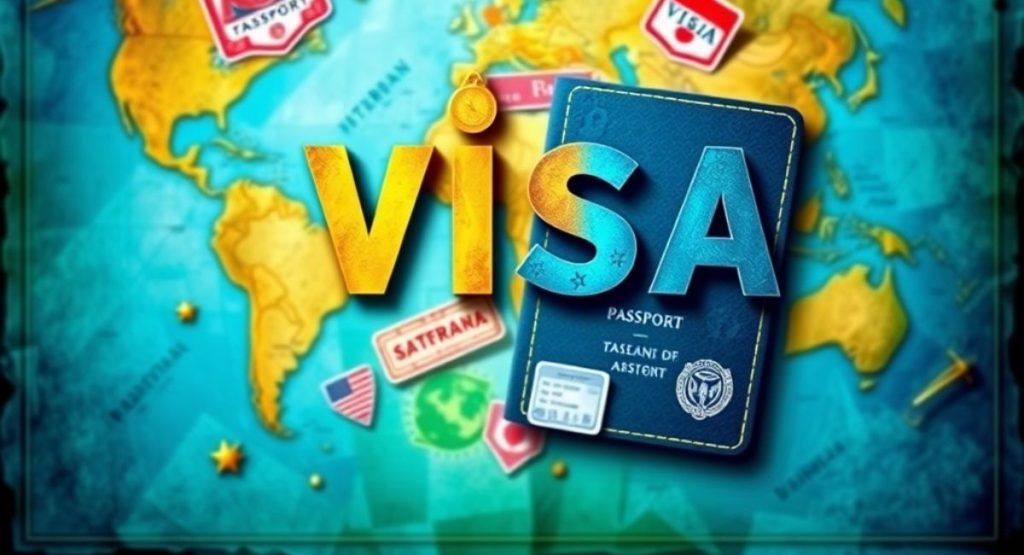India has long been a destination that draws travelers, businesses, and students from around the globe. However, navigating the complexities of visa regulations can often feel like walking a tightrope. Recent changes in Indian visa policies have stirred curiosity and debate among potential visitors. Whether you’re planning a leisure trip, an international business venture, or academic pursuits, these new regulations are worth understanding. This blog will explore the changes, analyze their implications, and shed light on their potential long-term impact.
Evolving Visa Policies in India
India’s visa regulations have always been a reflection of its national priorities. The recent adjustments mark a significant modernization aimed at addressing the evolving needs of both domestic stakeholders and international visitors. One prominent change is the introduction of streamlined e-Visa options. The government has expanded the categories under which foreign nationals can apply for e-Visas, including medical, business, and tourist purposes. Simplifying application processes makes travel more accessible and less time-consuming for applicants. Indian Visa Application.
Another notable update is the increase in visa duration for specific categories to promote longer stays. This move aligns with India’s efforts to enhance tourism and collaboration in trade and education. While these changes signal progress, they also bring certain challenges, particularly for immigration authorities tasked with balancing simplified entry processes with national security concerns.
Implications for International Travelers
For tourists, the adjustments in Indian visa regulations come as a mixed bag. On one hand, the expanded e-Visa program allows for smoother entry into the country. Simplified documentation requirements, along with quicker application processing times, empower travelers to focus on their journeys rather than bureaucratic formalities.
However, some recent changes have also introduced revised restrictions, such as limited validity windows or region-specific entry permissions in certain cases. For example, travelers may now need to clarify their itineraries more thoroughly or face restrictions based on their declared purpose of visit. While these measures aim to streamline monitoring and ensure compliance, they can create confusion if travelers are not adequately informed.
Additionally, post-pandemic health protocols have found their way into the visa landscape. Showing proof of vaccination or recent health screenings has become a standard requirement in many scenarios, making it essential for travelers to stay updated on changing guidelines.
Effects on Businesses and Professionals
The repercussions of regulatory changes aren’t just reserved for leisure travelers. Entrepreneurs, business leaders, and professionals engaging in cross-border collaborations are equally affected, for better or worse. India’s amended visa rules now provide extended durations for business visas, offering greater flexibility for long-term projects. Businesspersons working on joint ventures or startups may find it easier to build relationships and establish a presence in India without frequent visa renewal requirements.
On the flip side, certain business policies, like more stringent documentation requirements or tighter scrutiny over the intent of travel, might slow down procedural efficiency for some applicants. Professionals who often multitask between workshops, networking events, and sales pitches in multiple Indian cities may need to reconsider their travel plans based on updated regional visa provisions.
Industries like information technology and pharmaceuticals, which thrive on a pool of global talent, may benefit from friendlier work visa options. However, they might also face hurdles in recruiting, if specific cumbersome policies aren’t addressed.
The Impact on Education and Research Sectors
The education sector remains one area profoundly impacted by India’s visa regulation changes. Students form a significant portion of the foreign inflow into India each year. Recent changes in educational visas aim to foster global academic exchanges and position India as a hub for learning. Visa durations for international students have been extended in many cases, reducing the administrative burden of frequent renewals. Additionally, the visa fee structure has been revised to make it more feasible for students.
However, challenges remain. More stringent checks during the visa application process aim to ensure admission compliance and deter misuse of visas for purposes other than study. While this supports the integrity of the system, it can create bottlenecks for students from countries with less streamlined bureaucratic processes. Research collaborations, which often require scholars to move between countries, have also been affected by some region-specific entry clauses, potentially slowing down joint academic progress.
Despite these challenges, the changes reflect India’s intent to remain an appealing destination for skilled students, many of whom choose to stay and contribute to the Indian economy upon graduation.
Boosting India’s Tourism Industry
The tourism sector has always been a major beneficiary of progressive visa policies. India’s new regulations seem geared toward reviving inbound tourism, which took a major hit during the COVID-19 pandemic. The government’s efforts to increase the duration of tourist visas and simplify the e-Visa process undoubtedly open doors for millions actively seeking travel opportunities. Indian Visa Online.
To attract more international visitors, India has also begun addressing pain points that previously plagued its visa system. Faster online processing, multi-entry permissions, and fewer interviews make the travel experience more inviting. Coupled with various promotional campaigns showcasing India’s heritage and natural beauty, the streamlined visa process enhances the country’s competitiveness as a top global tourist destination.
That being said, uneven access across socio-economic classes and geographically remote areas could limit how extensively certain nations benefit from India’s relaxed visa regime. A more inclusive approach would further bolster tourism nationwide, benefiting regions that rely on visitor activity for economic sustenance.
Balancing National Security and Openness
Amid all the benefits these changes bring, the underlying need for heightened national security cannot be overlooked. Visa policies worldwide must straddle the fine line between fostering openness and enforcing regulations against unlawful entry. India’s recent tweaks, including mandatory background checks in some cases, reflect a conscious effort to monitor travel patterns and restrict misuse.
The implementation of biometric systems as part of visa applications has added a modern, secure layer to screening processes. However, these measures also raise privacy concerns for travelers, particularly those from countries with limited data-sharing agreements. Achieving a balance necessitates transparent communication by Indian authorities, ensuring applicants are fully informed of what to expect without unnecessary hurdles.
The Future of Indian Visa Regulations
India’s changing visa regulations illustrate its aspirations to remain an interconnected player in an increasingly globalized world. While the immediate impacts are evident, from simplified modes of entry to enhanced flexibility in stay durations, the long-term effects appear poised to redefine how travelers engage with the country.
Emerging technologies like artificial intelligence could soon revolutionize how India manages its visa landscape. Automated evaluations, faster approvals, and enhanced tracking systems may become the norm, ensuring user-centric, yet robust, travel channels.
Looking ahead, consistent dialogue between policymakers and stakeholders—from tourists to business leaders—will drive further improvements. Additionally, collaborations with other governments for mutual visa relaxations could pave the way for exponential growth in trade, tourism, and education.
Final Thoughts
The recent changes in Indian visa regulations represent a progressive leap toward improving ease of access without compromising on security. While challenges remain, particularly for those unfamiliar with the updated protocols, the benefits far outweigh the inconveniences for most applicants.
India’s willingness to adapt its policies to an evolving global landscape signals a positive future for international travelers, businesses, and the economy at large. Staying informed, preparing ahead, and engaging with new systems of entry will go a long way in ensuring a seamless experience for all those looking to explore India’s rich cultural, entrepreneurial, and academic landscape.



